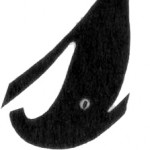French seams in the Music Class blouse
-
12 years ago LINK
 EllenMCM
@EllenMCM
EllenMCM
@EllenMCM
Usually, I use French seams in blouses. However, the Music Class instructions seem unusually adamant in re. Not cutting into the seam allowances. Could I get away with it? Will it mess with the drape?
12 years ago LINK Nicole
@motherof5
Nicole
@motherof5
If you were sewing with a super fine fabric it may work but there are a lot of seams and the front and back yoke are not lined.
I made a Family Reunion dress, for a sweet friend who adores a perfect inside finish, and I used french seams for the sides and then bound the arm hole sleeve. Personally, I felt that looked a little ‘stiff’ and that was using dupion/dupioni silk.
Sorry to not have a more definitive answer for you.
~Nicole~
12 years ago LINK Lightning McStitch
@LightningMcStitch
Lightning McStitch
@LightningMcStitch
I thought about this as I made one just recently. I think it would simply get too thick at the side where the two front (or two back) panels are joined, and then sewn into a frenched side seam. It would have to be very light weight fabric as Nicole said.
12 years ago LINKJennifer1568 @Jennifer1568
I just finished a Music Class blouse out of Swiss Dot fabric. The fabric is sheer like voile. I finished all the inside seams with hair line seams. For the main sewing I used a 70 needle because the fabric is so fine but then when I finished the seams I used an 80 needle. I did have a sort of hard time getting the foot over the bump where the sleeve seam met the side seam and at the side seam yokes. I fiddled with it and pounded the seam allowances to get them flat. I always use french seams to make the arm and side seams when making the Music Class blouse. I have made it 7 times. I usually use shirting fabric. I am going to read the pattern again because I don’t remember the instructions saying not to use french seams.
12 years ago LINK EllenMCM
@EllenMCM
EllenMCM
@EllenMCM
I’m still mulling over how to get a clean finish on the inside of this thing. Dd chose a linen shirting that is going to fray like crazy.
12 years ago LINKneedlewoman @needlewoman
I use french seams for the inside of kids’ clothes whenever I can get away with it. And certainly for anything that frays very badly. The trick I find is to make sure you trim your first seam to 1/8″ after sewing. I use my rotary cutter and ruler to line it up, and then sew the final seam with a scant 1/4″. This seems to work well, even when two seams meet up – like armholes. Hems can get a little clunky, but firm pressing with the iron helps.
10 years ago LINK EllenMCM
@EllenMCM
EllenMCM
@EllenMCM
I can’t believe I pondered this question for over a year! Yesterday, I dug some lightweight chambray out of my stash and gave it a try. The French seams look like they’re working out so far. Lining the yokes might be neater. Its a really sweet little blouse.
10 years ago LINK Sarvi
@Sarvi
Sarvi
@Sarvi
I believe I was the person Nicole mentioned above — at any rate I am the lucky recipient of an exquisite silk dress fitting that description. Nicole is right, while the bound seams at the armscye are gorgeous to behold (and very comfortable on that particular dress because of the fit) oftentimes the most practical solution for that specific seam is the one with the fewest layers of fabric. I used to be addicted to French seams but rarely use them anymore. On the other hand, @meleliza does very fine heirloom sewing and uses them frequently and I believe said she did not find them bothersome or bulky, so it may be a question of both skill and personal preference. Kind of like PDF vs paper 🙂
10 years ago LINK meleliza
@meleliza
meleliza
@meleliza
I just snuck into sleeping baby girls room to find the pink Liberty blouse I made last spring. Of course it’s all French seams and it’s lovely. I lined the yokes. The pattern didn’t call for it? Strange, it’s much easier and more comfortable to line a yoke.
Linen really does need good finishes. You could also use flat felled seams or a combination of flat felled and French seams. I often change the construction order to acoomdoate the fabrics or finishes I plan. French seams in armscye work a little better in the round than flat, for example. Good pressing helps, so does a little whack with a hammer.
The problem with bound seams, is that they create bulk and stiffness. French seams are just two layers, bound seems are 4. Bound seams are good for very very full sleeves with so much gathering nothing else works. If the linen isn’t very lightweight, I would use flat felled seams for the armscyes, setting the sleeves flat.
I hope @sarvi isn’t suggesting that I lack the skill to tape 40 pages together. 😉 I lack only time to waste and patience.
10 years ago LINK Sarvi
@Sarvi
Sarvi
@Sarvi
Haha! No, I meant I lack the skill to do French seams as well as you do! But I couldn’t resist mentioning your other favorite topic, hehe.
10 years ago LINK meleliza
@meleliza
meleliza
@meleliza
🙂
10 years ago LINK EllenMCM
@EllenMCM
EllenMCM
@EllenMCM
I’m on the button holes! I’m having trouble with he one at the top. I’m at fencing with older Dd right now, but planning a second attempt late tonight.
10 years ago LINK Nicole
@motherof5
Nicole
@motherof5
Good luck Ellen.
Do you have access to an older machine? Many modern machines dislike bulk but older work horses will often chug through anything.
Alternatively, leave that button hole off, sew a faux button where it should be and sew a popper on the inside. I do find this blouse does benefit from a sew in popper just under the edge anyway.10 years ago LINK EllenMCM
@EllenMCM
EllenMCM
@EllenMCM
In the end, I rotated the top button hole by 90 degrees. My machine just couldn’t handle that spot between the seam at the yoke and the collar. But it has button holes now! They are resting with some glue.
You must be logged in to reply to this topic.
copyright
Unless otherwise credited, all work on this blog is © Liesl + Co., Inc, 2008-2026. You are welcome to link to this blog, but please ask permission before using any text or images.